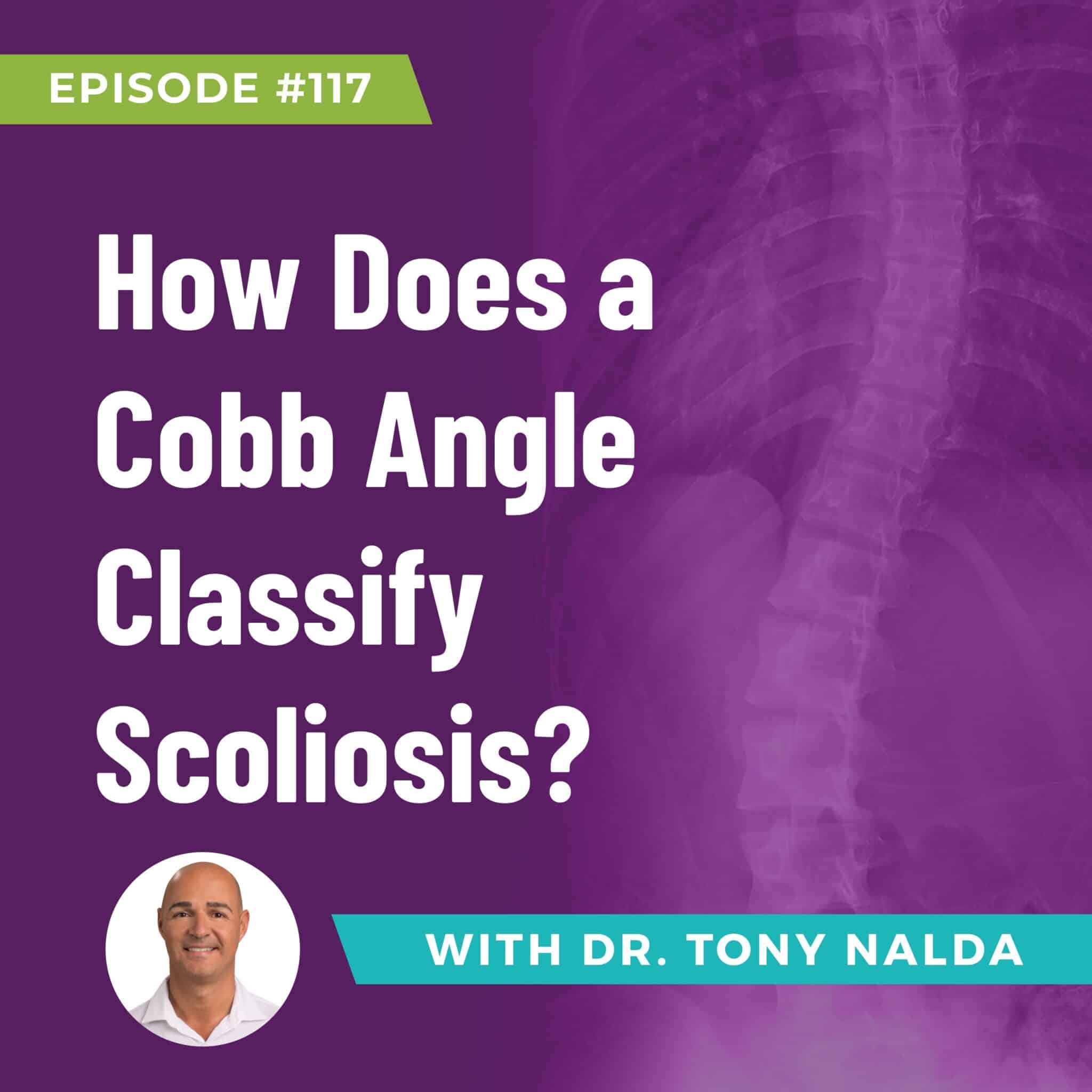Episode 117: How Does a Cobb Angle Classify Scoliosis?
When diagnosing scoliosis, healthcare professionals rely on a measurement known as the Cobb angle. This standard measurement assesses the degree of spinal curvature by comparing the tilt of one vertebra to another. Cobb angles are expressed in degrees and play a crucial role in classifying the severity of scoliosis.
Classifying Scoliosis with the Cobb Angle
- Mild Scoliosis - Cobb angle less than 25 degrees
- Moderate Scoliosis - Cobb angle between 25 and 45 degrees
- Severe Scoliosis - Cobb angle greater than 45 degrees
Accurate measurement of the Cobb angle is essential for proper classification and treatment planning. The reliability of the Cobb angle measurement can be influenced by the positioning of the patient during the X-ray.
- Standing Position - Scoliosis X-rays should always be taken with the patient standing. This position reflects the natural curvature of the spine under the influence of gravity.
- No Shoes - Patients should be barefoot to avoid any artificial alterations in posture.
- Correct Posture - The patient should stand just off the Bucky (the X-ray machine), without leaning back against it. Leaning can cause rib rotation and skew the Cobb angle measurement.
- Arm Position - Arms should be completely relaxed and in a consistent position across different X-rays to avoid altering the angle.
Consistency in how X-rays are taken is vital for monitoring scoliosis over time. Reliable measurements help determine whether the curvature is worsening, improving, or remaining stable, guiding treatment decisions effectively. Variations in X-ray techniques can introduce a measurement error margin of about five degrees. For instance, a Cobb angle measured at 45° by one doctor might be recorded as 50° by another due to these inconsistencies.
To minimize errors and ensure accurate Cobb angle measurements the following should be done:
- Always take scoliosis X-rays in a standing position.
- Ensure the same positioning and technique are used for each X-ray.
- Significant deviations, such as taking X-rays while lying down or incorrect arm positioning, can lead to measurement inaccuracies greater than the standard five-degree error margin.
Accurate Cobb angle measurements are crucial for correctly classifying the severity of scoliosis and devising an effective treatment plan.
For more insightful discussions on scoliosis and its management, tune in to Dr. Tony Nalda’s podcast.
Podcast: Play in new window | Download
Subscribe: RSS
Dr. Tony Nalda
DOCTOR OF CHIROPRACTIC
After receiving an undergraduate degree in psychology and his Doctorate of Chiropractic from Life University, Dr. Nalda settled in Celebration, Florida and proceeded to build one of Central Florida’s most successful chiropractic clinics.
His experience with patients suffering from scoliosis, and the confusion and frustration they faced, led him to seek a specialty in scoliosis care. In 2006 he completed his Intensive Care Certification from CLEAR Institute, a leading scoliosis educational and certification center.
About Dr. Tony Nalda
 Ready to explore scoliosis treatment? Contact Us Now
Ready to explore scoliosis treatment? Contact Us Now








